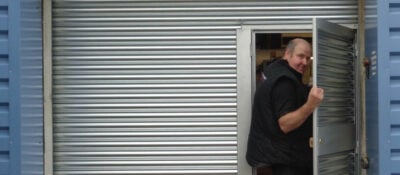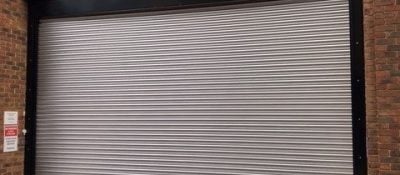Heavy-duty roller shutter doors for industrial sites. Ensure security, durability, and smooth operation in demanding environments. Our expert team is available to provide you with a quote in minutes.
Not sure which product suits you needs? We can help you build a quote online within 5 minutes!
Industrial roller shutter doors are an essential component of commercial and industrial buildings. These built for purpose doors provide security, insulation, and ease of access to a wide range of applications.
These security-rated industrial doors are designed to withstand heavy use and harsh environmental conditions, making them a durable and reliable solution for a variety of industries.
Your industrial premises are more than likely to house expensive stock and equipment as well as staff members. You want to know that at all times of the day and night, everything and everyone is safe and secure - with Security Direct you can guarantee you are receiving doors that meet the needs of your industrial property.
An industrial roller shutter, like a warehouse roller shutter door, can be the perfect solution to protect the contents of your business.
We are experts with over 3 decades of experience in providing the highest standard of industrial doors in the UK. Our team is happy to assist you in sourcing industrial doors. Feel free to call our advisors or arrange an online appointment.
With a range of materials, styles, and sizes available, industrial roller doors our industry-leading industrial roller shutters can be customised to meet the specific needs of each application.
Whether you’re looking for an agricultural industrial door to withstand the harsh weather conditions or looking to provide protection against unauthorised personnel to your building with an industrial roller door, we can help you find a door that is tailored to your business and your requirements while keeping your budget in mind.
Security Direct are able to provide industrial doors to manufacturing and factory development projects. We have established a great reputation assisting contractors on industrial projects.
For more information on how we can aid your building project, feel free to look at our dedicated architects and contractors page.
For those considering installation options, we have a comprehensive guide comparing our Professional Roller Shutter Installation Service with DIY Supply Only solutions.
This guide includes in-depth insights on the pros and cons of each approach, helping you make an informed decision that aligns with your
requirements.
Discover more about these options and decide which path suits you best by reading our detailed comparison.
Call our sales team today, with your requirements and we can help specify a solution to meet your requirements and budget.
There are several types of industrial doors available, these include sectional doors, rolling industrial steel doors, high-speed doors, and specialty doors such as freezer doors and impact doors.
The type of door that is best suited for a particular application will depend on factors such as the size and shape of the opening, the level of security and insulation required, and the specific environmental conditions in which the door will be used.
Industrial doors can be made from a variety of materials, including steel and aluminum. The choice of material will depend on the level of security and insulation required, the environmental conditions in which the door will be used, and the aesthetic preferences of the buyer.
When choosing industrial doors, it is important to consider factors such as the size and shape of the opening, the level of security and insulation required, and the specific environmental conditions in which the door will be used. Other factors to consider may include the cost of the door, the durability and reliability of the product, and daily usage.
5. Do Industrial Doors need servicing?
Servicing your Industrial Doors is a legal requirement. Industrial doors are expensive pieces of equipment, which are used regularly and susceptible to wear and tear. If they are not serviced on a regular basis, then they can become dangerous. Regular servicing can extend the working life of the product and reduce breakdowns. There are also regular checks you can do yourself to maintain the life of your industrial door, such as cleaning and making sure the door is opening and closing correctly.
The recommended safe height for a roller shutter to accommodate Heavy Goods Vehicle (HGV) access is at least 4.5 meters. This height allows for the maximum standard height of most HGVs, which is approximately 4.5 meters, ensuring safe and unobstructed entry and exit. It’s important to ensure the clearance is fully unobstructed, accounting for any structural elements above the opening.

Roller shutters can be great at reducing noise from your industrial or commercial space. Find out ho...

Learn about roller shutter doors with pedestrian access. Compare wicket doors vs. separate doors to ...

Discover the costs of industrial roller shutter doors in 2024, including installation and ongoing ex...